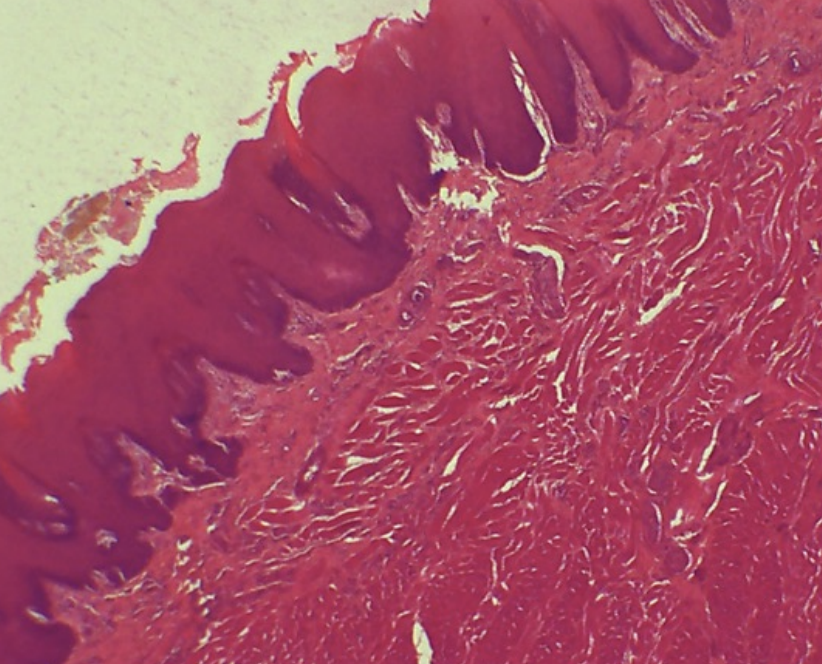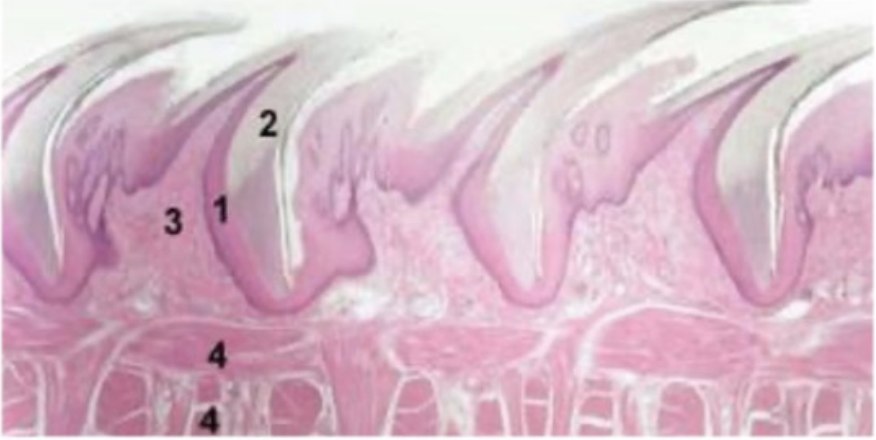Histology of Tongue
1/13
There's no tags or description
Looks like no tags are added yet.
Name | Mastery | Learn | Test | Matching | Spaced |
|---|
No study sessions yet.
14 Terms
Tongue
Type of organ
Covered by
Shape
Function
Epithelium
In which species keratinized
In which species non-keratinized
All skeletal muscles arranged in
Type of organ: Muscular organ
Covered by: Mucosa
Shape: Spatula shape
Function:
Prehension
Mastication
Deglutition
Epithelium: Stratified squamous
In which species keratinized: Ruminants and horse
In which species non-keratinized: Cats and dogs
All skeletal muscles arranged in:
Cross-sectionally (helps flatten tongue)
Longitudinally (helps shorten tongue)
Transverse (helps narrow and elongate tongue)

What are the 3 types of lingual papillae present?
Foliate (leaf shape) papillae
Filiform papillae
Circumvallate papillae
Foliate (leaf shape) Papillae
Type of epithelium
Lamina propria
Taste buds?
Well developed in which animals
Absent in which animals
Epithelium: Nonkeratinized stratified squamous
Lamina propria: Forms connective tissue core within each fold
Taste buds: Present in walls of cleft
Well developed in: Horse and dogs
Absent in: Ruminants

Filiform Papillae
Epithelium
Lamina propria
Taste buds?
Numerous in which animals and why
Epithelium: Keratinized stratified squamous
Lamina propria: Narrow connective tissue core that supports slender projections
Taste buds: Absent because it has mechanical function
Numerous in: Ruminants and cats for drinking milk/water

Circumvallate Papillae
Epithelium
Lamina propria
Taste buds?
Characteristics
Epithelium: Nonkeratinized stratified squamous
Lamina propria: Forms connective tissue core
Taste buds: Numerous on the side walls
Characteristics:
Have deep indentation
Not numerous
